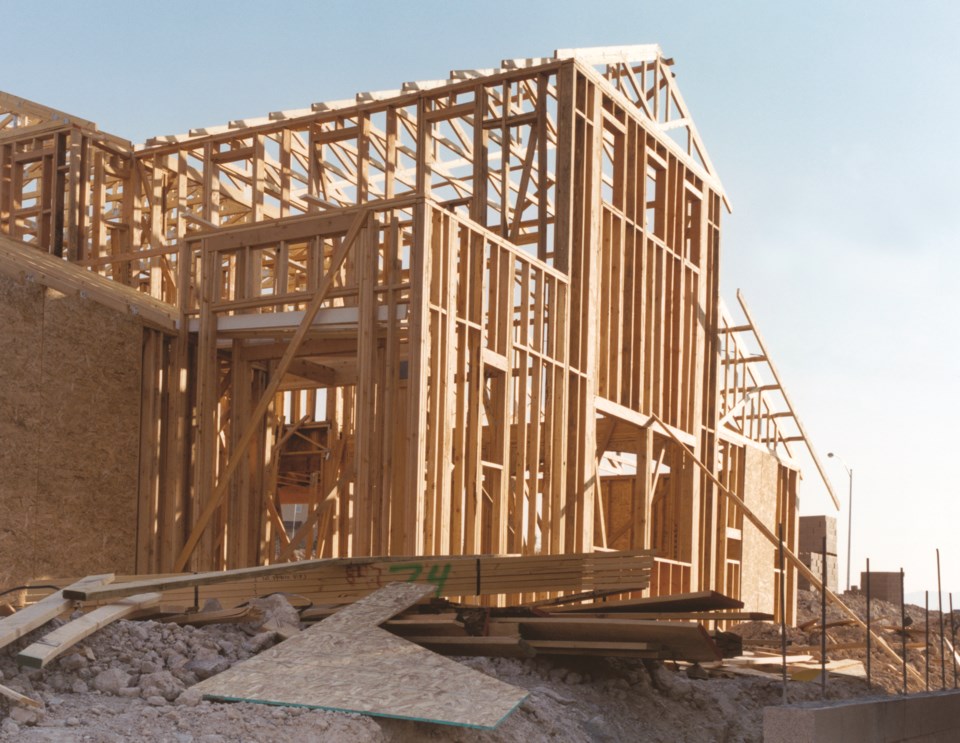More charging stations, increased waste diversion and cutting-edge building requirements to reduce greenhouse gas (GHG) emissions could all be coming to Whistler thanks to the municipality’s new green building policy.
At an Aug. 2 Committee of the Whole meeting, Whistler’s mayor and council heard an information report from staff on the draft policy, which, if adopted, would set new performance requirements and guidelines for buildings in the resort.
Officials first adopted a green building policy in 2008 to provide a framework of performance-based guidelines and criteria for rezoning projects to help the municipality achieve its climate action goals.
Under the new updated policy, builders will have to complete a comprehensive checklist of requirements for buildings subject to rezoning, along with supporting documentation.
Under the policy, the checklist requirements apply to rezoning applications, and to applicable development and building permits. The draft policy will also be used as a tool to assess the sustainability features of development and building permit applications for single-family homes over 465 square metres in size.
According to Resort Municipality of Whistler (RMOW) planning manager John Chapman, this new policy should help streamline the permitting process by decreasing staff workload and improving processing times.
“We are finding that administering the existing green building policy from 2008 is challenging. It’s not well aligned with building technologies. Practices have evolved, the Building Code has evolved, and the BC Energy Step Code has been introduced,” he said.
“We see this as an overall improvement across the board. With this new policy, we’re bringing in one single checklist. The existing policy has several checklists that applicants either choose from or are assigned by us, which adds some complexity.”
Chapman noted the construction industry’s response to the draft policy has so far been generally positive and reflects an improvement over the existing policy and procedure.
The requirements in the checklist range considerably, from energy use and building materials to site design and water conservation, but are all designed to reduce a building’s overall negative environmental impact and encourage more sustainable low- or zero-emission lifestyles.
For example, to improve energy efficiency, all new developments must be built one step higher than the current requirements mandated by the RMOW’s existing Building and Plumbing Bylaw.
New developments must use a low-carbon energy system as the primary space and water heating source and high-efficacy lamps for light fixtures in new dwelling units, and commercial and industrial space.
Rezoning applications that require demolition must meet a minimum 60-per-cent waste diversion rate and submit a demolition waste diversion report. Applicants are also encouraged to conduct a salvage assessment of buildings planned for removal.
According to RMOW planner Louis-Félix Tremblay-Renaud, this follows a similar policy already in place in Squamish, where applicants receive a partial refund on their permitting fee if they meet a 40-per-cent diversion rate, and a more substantial, pro-rated refund at 80 per cent.
Councillor Duane Jackson, a long-time developer in the community, was optimistic the waste-diversion aspect of the policy would become more widespread across the province as more processes to deal with demolition are put in place.
“I’m optimistic the demolition one will become more common, and the buildings that are mostly getting demolished are a lot of 1970’s buildings—not a lot in those buildings is reusable. So when it refers to reusing wood, lumber, and framing, it’s not worth anything. It’s more of a hassle to handle it,” he said.
“I hear from the [province] that these may be challenges because there are no processes in place, and it’s hugely labour intensive and just adds to the cost. [We should] have a check-up in a year and revisit some of the practical elements of the policy.”
The draft policy also requires new buildings to be designed for widespread electric vehicle uptake to encourage zero-emission transportation. All residential parking spaces for new multi-family and mixed-use developments, excluding visitor parking spaces, must provide an electrical outlet capable of providing Level 2 EV charging or higher to the parking spaces.
In non-residential developments, at least 25 per cent of parking spaces must be provided with an energized outlet capable of providing Level 2 charging or higher.
This requirement can be implemented over time, but builders are encouraged to lay out the groundwork for this infrastructure in new buildings to save on overall cost.
“The most important piece here is the EV-ready requirement that allows buildings to adapt over time. That’s going to be the biggest upfront cost and hardest to retrofit after the fact,” said RMOW general manager of planning and resort experience, Jessie Gresley-Jones.
“Requiring 100 per cent EV on Day 1 could be over-asking when the demand is not currently there, so this allows a flexible approach over time to respond to the market.”
Currently, fossil fuel-run vehicles are Whistler’s largest source of GHG emissions, accounting for 52 per cent of Whistler’s total emissions last year.
In addition to the EV building requirements, bike infrastructure is also mandated for buildings requiring rezoning.
Multi-family residential developments must provide sufficient long-term bicycle parking spaces in a bicycle storage facility or within each residential dwelling unit to encourage more active transportation.
Twenty-five per cent of required long-term bicycle parking spaces must be equipped with an electric outlet to support electric bicycle charging and other e-mobility devices.
The draft policy will consider the input staff received at last week’s Committee of the Whole meeting and bring a final policy back to council at a future date for adoption and implementation.
You can learn more about the green building policy at whistler.ca/business/land-use-and-development/planning/green-building-policy.




